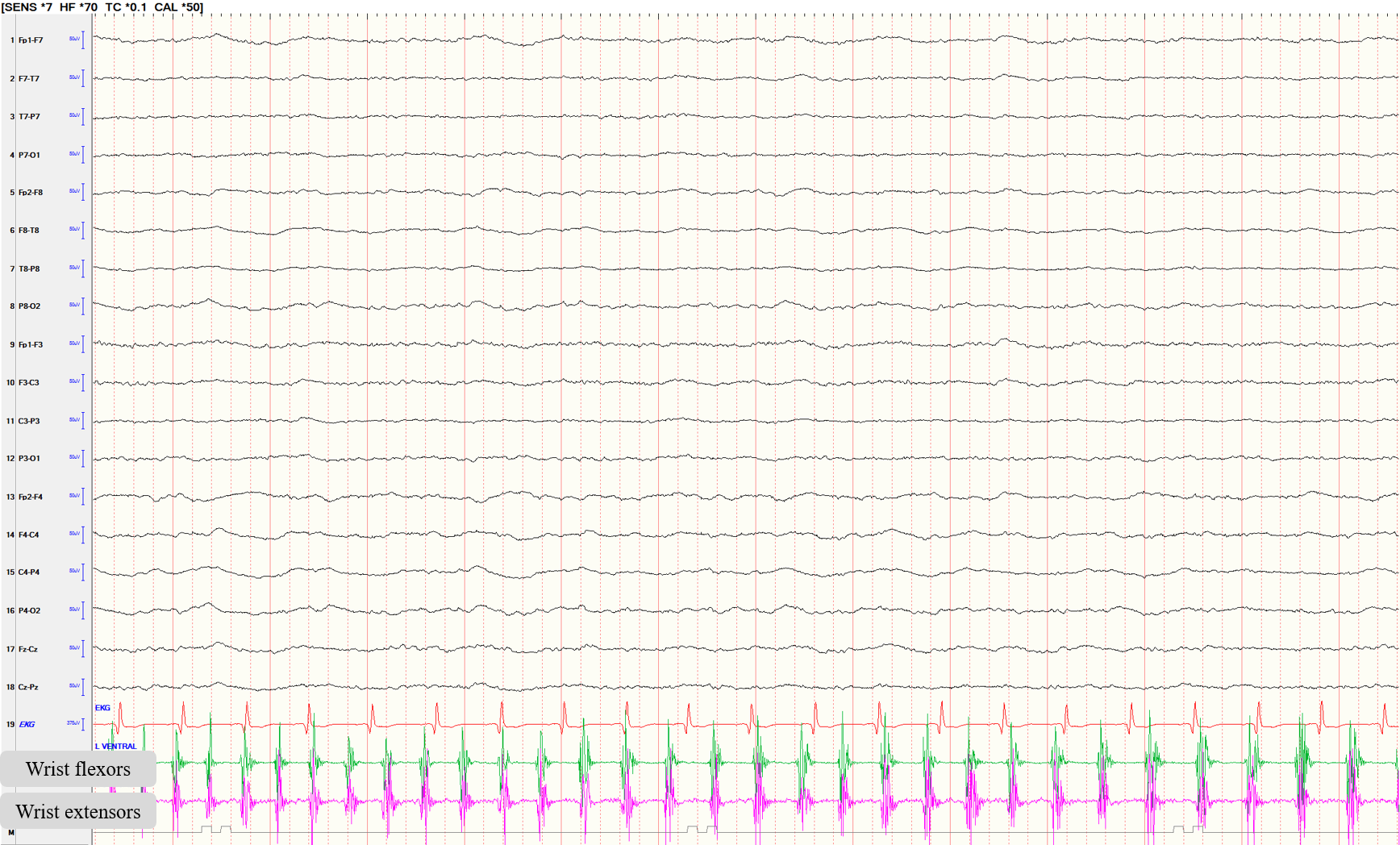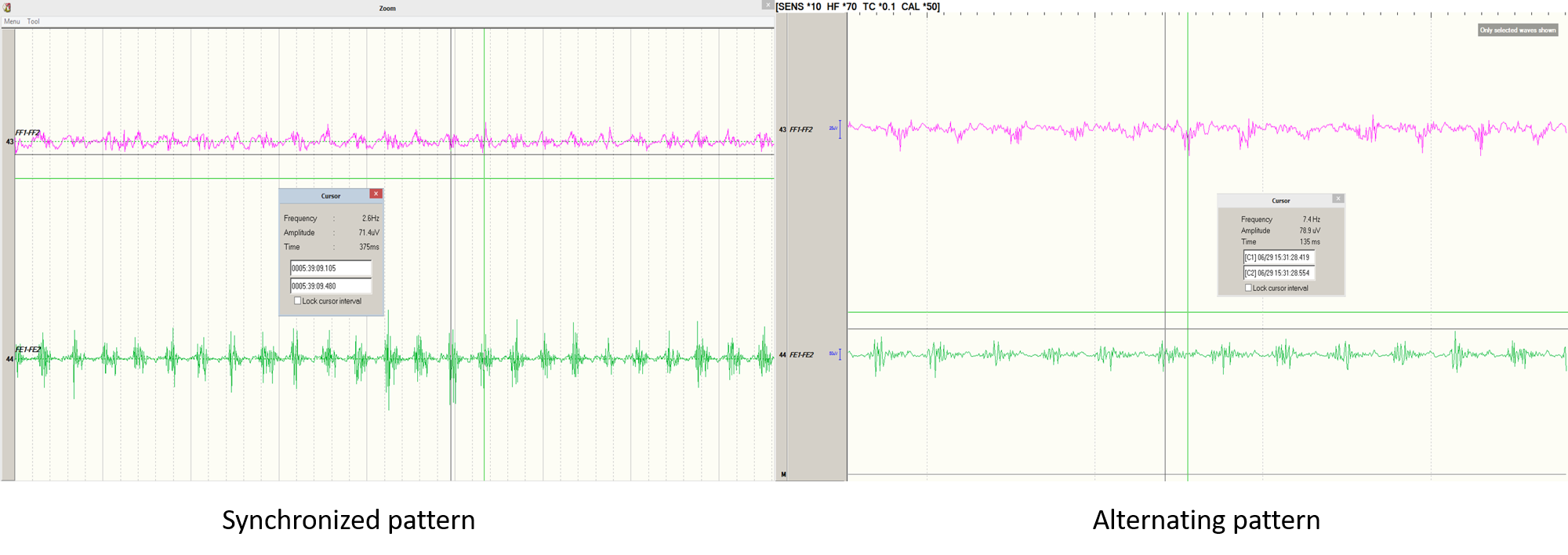Category: Neurophysiology (Non-PD)
Objective: To compare surface EMG characteristics of clonic seizures with tremors.
Background: Clonic seizures can clinically mimic tremors. In cases with poor or no EEG correlate, this distinction can be difficult. Surface EMG recordings of such movements can be useful in distinguishing them.
Method: We recorded two patients with unilateral parkinsonian tremor and one patient with bilateral drug-induced tremor with surface EMG electrodes covering flexor and extensor muscles of the affected extremity. We compared these with 10 patients with known epilepsy and clonic seizures. Recordings were made using the Neurofax EEG-1200 system by Nihon Kohden.
Results: The EMG bursts in the agonists and antagonists were always synchronous in clonic seizures and these bursts increased in amplitude and duration from the first half of the seizure to the second half [figure 1]. The EMG bursts in patients with drug-induced tremor always showed an alternating pattern between agonists and antagonists. In patients with unilateral parkinsonian tremor, both alternating and synchronous patterns of EMG bursts were seen [figure 2].
Conclusion: Neurophysiology can play a clinically significant role in distinguishing tremor disorders from epileptic clonic seizures. This can be particularly useful in equivocal cases with no EEG correlation.
To cite this abstract in AMA style:
H. Ticku, N. Fotedar. Role of surface EMG analysis in distinguishing clonic seizures from tremors [abstract]. Mov Disord. 2022; 37 (suppl 2). https://www.mdsabstracts.org/abstract/role-of-surface-emg-analysis-in-distinguishing-clonic-seizures-from-tremors/. Accessed December 11, 2025.« Back to 2022 International Congress
MDS Abstracts - https://www.mdsabstracts.org/abstract/role-of-surface-emg-analysis-in-distinguishing-clonic-seizures-from-tremors/


